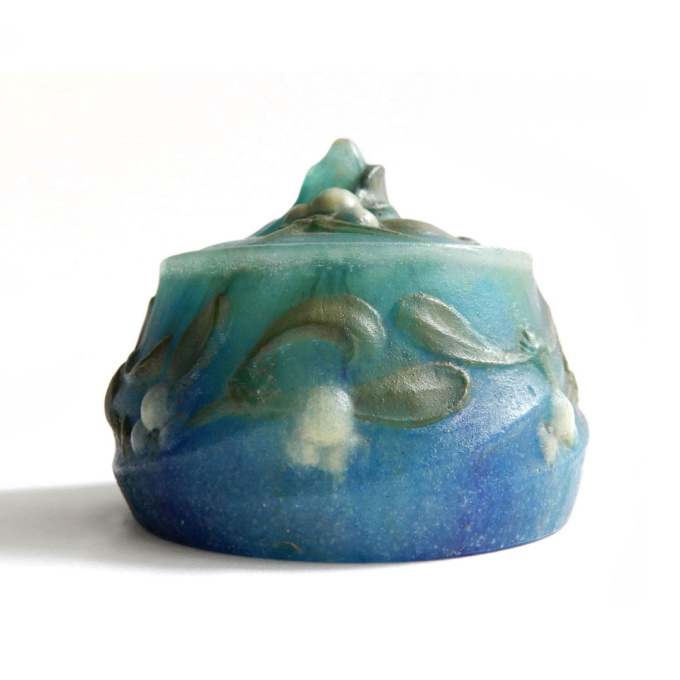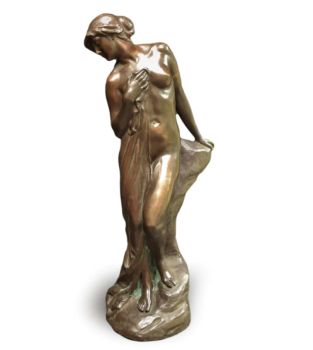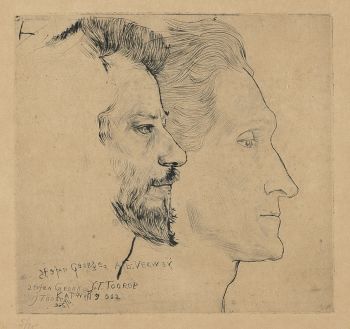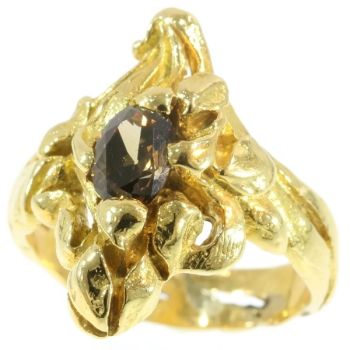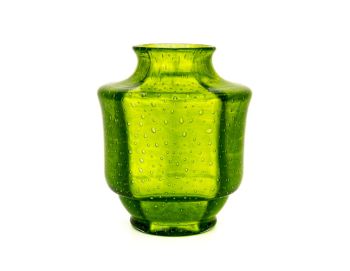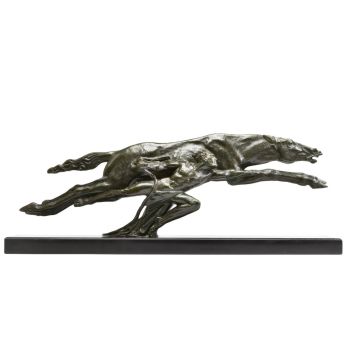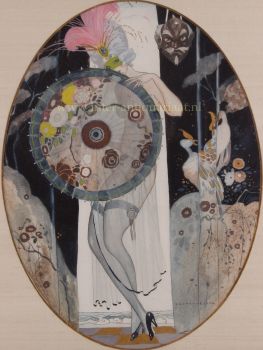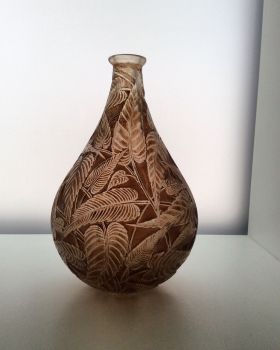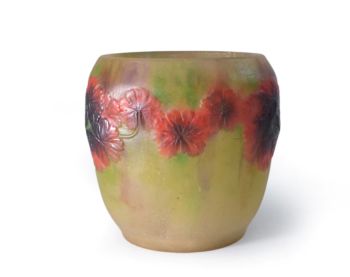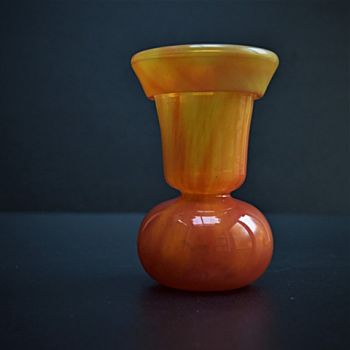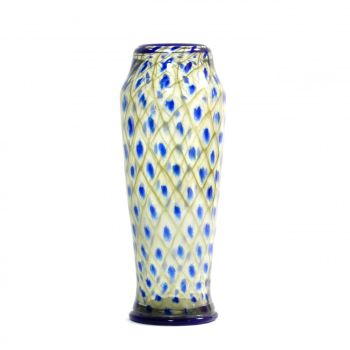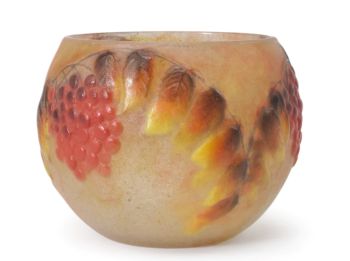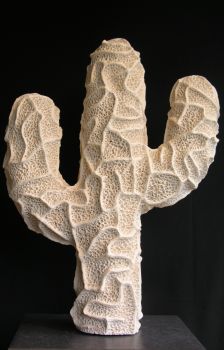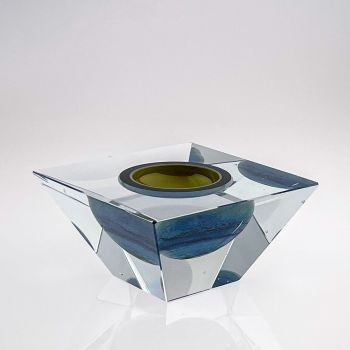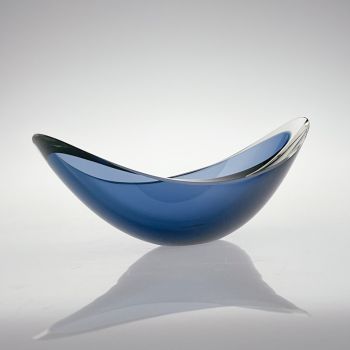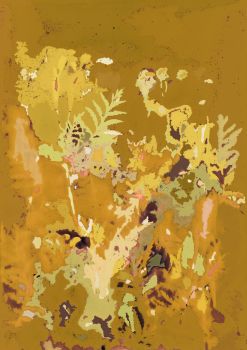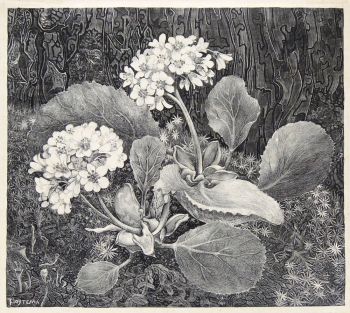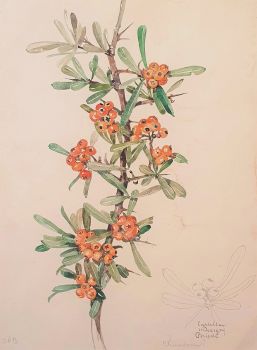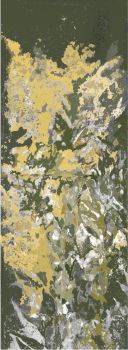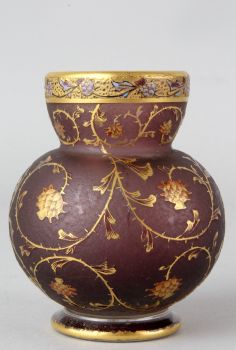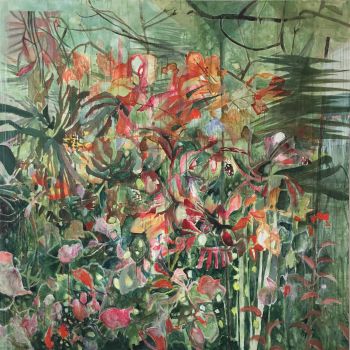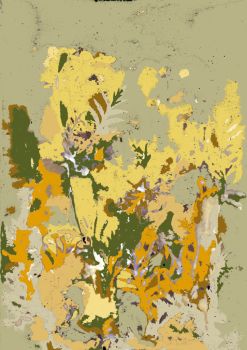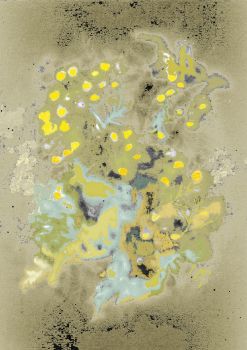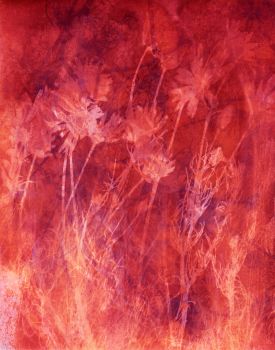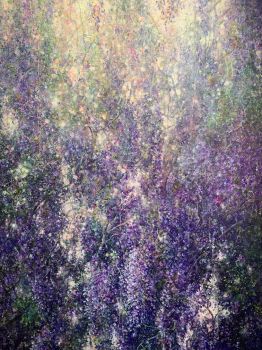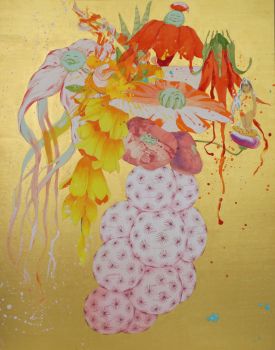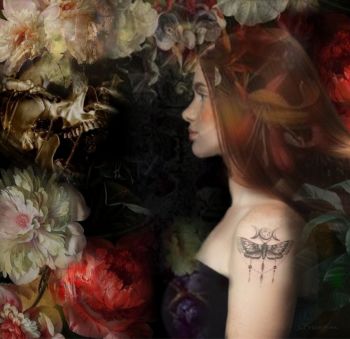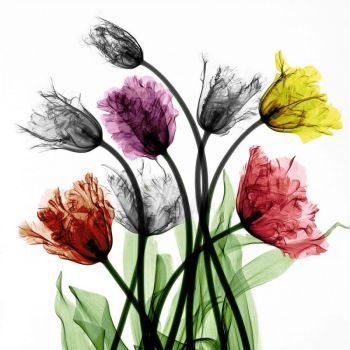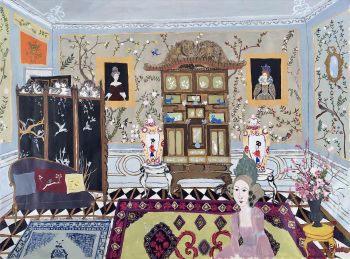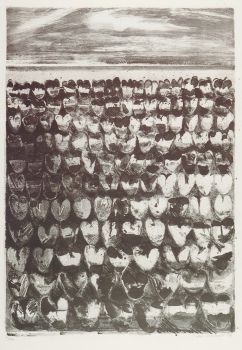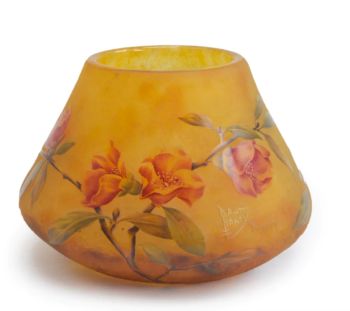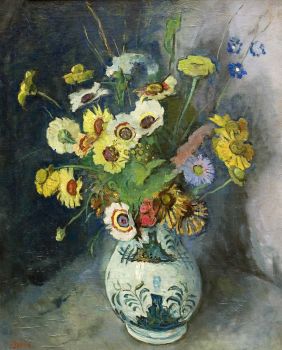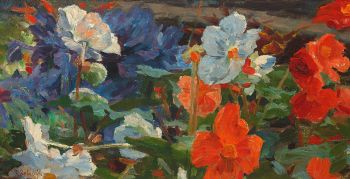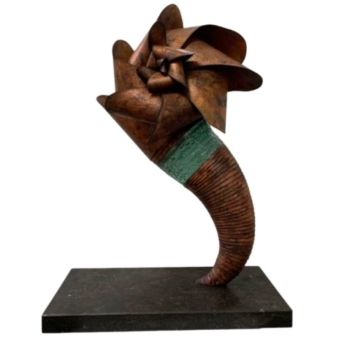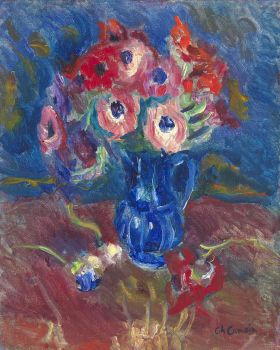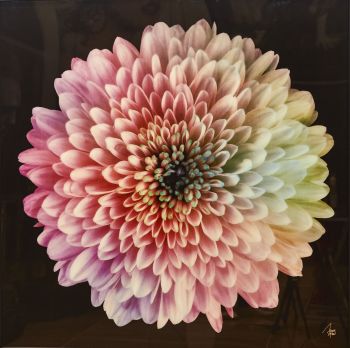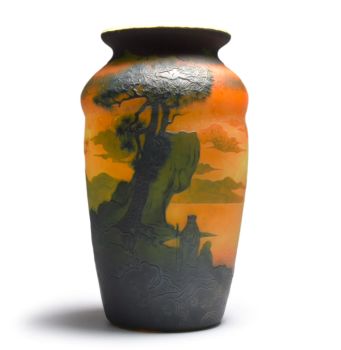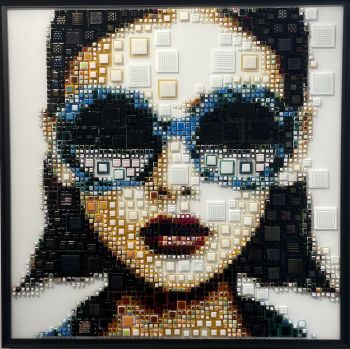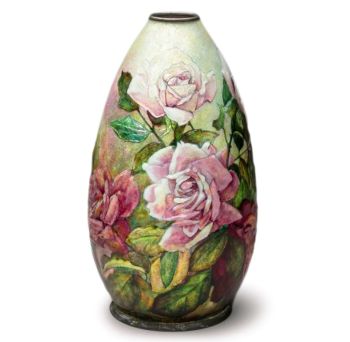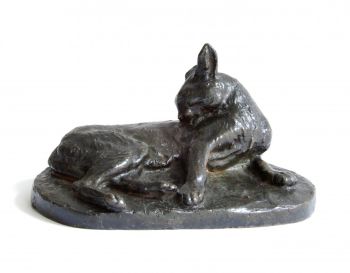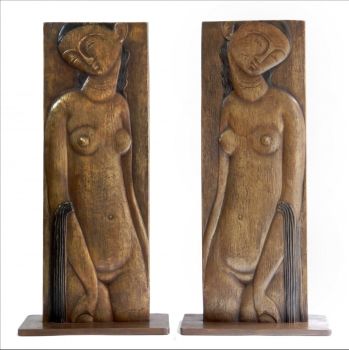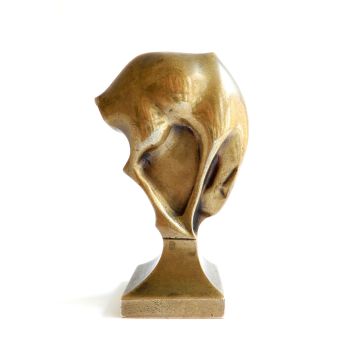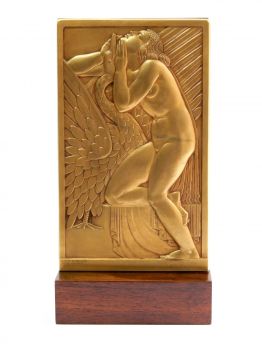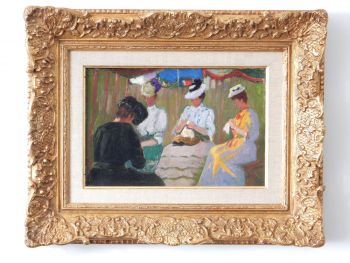Pâte de verre box 'Mistletoe' 1920 - 1925
Amalric Walter
Pâte de VerreVidrio
6 cm, ø 7 cm
ConditionExcellent
Actualmente no disponible a través de Gallerease
Dille Art
- Sobre la obra de arteAbout this piece
Rare box with lid with a decoration of mistletoe, which is a symbol of love and happiness. Just think of the Christmas tradition, kissing under the mistletoe. This box is made of pâte de verre (glass paste) and the specialty of Amalric Walter. The box is a design by the well-known designer Henri Bergé, who worked for Daum for a long time and also taught glass art design. The various blue colours of this box with the subtle green and white of the berries are sublime. In the beginning it was very difficult for Walter to apply these intense colours.
The box is signed with 'A. Walter, Nancy' and 'Berge sc'.
About the artist:
Amalric Walter (France, 1870-1959) was a very good glassmaker who was originally trained as a ceramist in Sèvres. He was already experimenting with pâte de verre when Antonin Daum persuaded him to join Daum to further develop the making of vases and figures in the difficult, newly rediscovered pâte de verre. Which he did, with great success. The beginning however was difficult, he got his own room and oven at Daum for his experiments. His first success were the Tanagra dancers, very popular at the time. They were still monotonous in colour, often light browns.
Later he worked closely with Daum's chief designer Henri Bergé (1868-1936). He also taught applied arts at the École professionnelle de l'Est.
Bergé designed all kinds of small utensils for Walter, often in a colourful palette. He designed, among other things, vide poches, inkwells, boxes and paperweights, often decorated with all kinds of animals such as butterflies, insects, lizards and flowers. They became good friends.
From 1919 to 1935 Walter worked as a self-employed person and started his own studio. He then continued to collaborate with Henri Bergé, he also collaborated with various other artists. Bergé died in 1936, which had a major influence on Amalric Walter, he himself was already visually impaired, in 1953 he was even completely blind.
Walter is best known for his animal figures made of glass paste, but also for smaller utensils such as this lovely box, he has also made several vide poches and various pendants, these were often worn with a silk cord by the most modern ladies from the better circles in the 1920's.
Amalric Walter did not have a high production, each design was made in small editions, partly because of this his work is sought after and can be found in various private and museum collections.
Literature:
- François le Tacon & Jean Hurstel; 'Amalric Walter, Maître de la pâte de verre', Edition Serpenoise, Metz Cedex.
- Philippe Olland; 'Dictionnaire des Maîtres Verriers de l'Art Nouveau á l'Art Déco Marques & signatures, Éditions Faton 2016. P.326-331.
- Victor Arwas, 'Glass, Art Nouveau to Art Deco', Academy Editions London 1987. P. 353-359.
- 'What is art nouveau & art deco waard', part I&II, editors Rob Zeegers Janny Stuurman-Aalbers and Reinold Stuurman, Publisher Scriptum Art , Schiedam, NL and Snoeck-Ducaju & Zoon, Ghent, Belgium, 2001. Part II, p . 110, 229, 322. - Sobre el artista
Amalric Walter (Francia, 1870-1959) era un muy buen vidriero que se formó originalmente como ceramista en Sèvre, Daum lo persuadió para que viniera a trabajar con ellos y desarrollara la fabricación de jarrones y figuras en la difícil y recién redescubierta pâte de noche. , lo que ha hecho con gran éxito y especialmente en colaboración con Henri Bergé.
De 1919 a 1935, Walter trabajó como autónomo y abrió su propio estudio. También siguió trabajando mucho con Henri Bergé, pero también colaboró con varios otros artistas.
Walter es más conocido por sus figuras de animales hechas de pasta de vidrio, pero también por utensilios más pequeños como este vide poche, también ha hecho varios colgantes que a menudo fueron usados con un cordón de seda por las damas más modernas de los mejores círculos, 1920.
Amalric Walter no tuvo una alta producción, cada diseño se realizó en pequeñas ediciones, en parte por esto su obra es buscada y se puede encontrar en diversas colecciones privadas y de museos.
¿Está interesado en comprar esta obra de arte?
Artwork details
Related artworks
Amalric Walter
Amalric Walter & Henri Bergé – Crabe plumier1920 - 1929
Precio a consultarAntiques Emporium
1 - 2 / 2Frères Daum
Daum Nancy – “Paysage Soleil Couchant” vase with two applied handles1900 - 1910
Precio a consultarAntiques Emporium
1 - 4 / 24Amalric Walter
Amalric Walter & Henri Bergé – Crabe plumier1920 - 1929
Precio a consultarAntiques Emporium
1 - 4 / 24- 1 - 4 / 24
Amalric Walter
Amalric Walter & Henri Bergé – Crabe plumier1920 - 1929
Precio a consultarAntiques Emporium
Gabriel Argy-Rousseau
Gabriël Argy-Rousseau – Crabes et Algues vase – 19201920 - 1929
Precio a consultarAntiques Emporium
Artista Desconocido
Un cáliz de monedas inglés-holandés1738
Precio a consultarPeter Korf de Gidts - Antiquairs
1 - 4 / 24- 1 - 4 / 12


